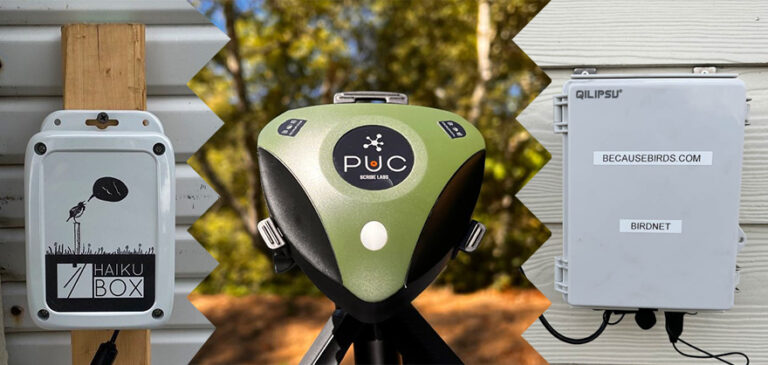Bird identification through bioacoustic monitoring is an exciting field with numerous technological advancements. In this comparison showdown, we’ll be taking a closer look at three popular bioacoustic bird identification stations: BirdNET-Pi, Haikubox, and the BirdWeather PUC. Each of these devices aims to provide an easy and reliable method for bird identification, but they have different features and specifications that might make one better suited for your specific needs than another.
Overview
| Category | BirdNET-Pi | Haikubox | PUC |
|---|---|---|---|
| Mounting | Wall-mounted | Wall-mounted | Tripod, backpack strap |
| Power | Outlet | Outlet | Outlet or battery |
| Build Quality | Depends on setup | Excellent | Excellent |
| Target audience | Tech enthusiast | Casual observer | Birdwatcher in field |
| Interface | Web | Web or app | App or Website |
| Detection threshold | Custom threshold | >20% confidence | Custom threshold |
Background info
BirdNET-Pi
BirdNET-Pi is a Raspberry Pi-based setup that uses the BirdNET deep learning model to identify bird sounds. It was developed by Patrick McGuire. The system can classify over 3,000 bird species and provides results in real-time.
Haikubox
Haikubox is a bioacoustic monitoring system by Loggerhead Instruments that uses a neural network (BirdNET) to identify bird sounds. The device is equipped with a high-quality microphone and can classify hundreds of bird species.
Read my full review of the Haikubox →
BirdWeather PUC
The BirdWeather PUC (Physical Universe Codec) is a handheld device that leverages BirdNET to detect and classify bird sounds. The PUC is super portable and can detect bird sounds while you’re birdwatching. It can also be left in a location for several days, then you can run the data through BirdNET for analysis and submission to BirdWeather.
Read my full review of the BirdWeather PUC →
Mounting options
BirdNET-Pi

BirdNET-Pi runs on a Raspberry Pi. Typically a microphone needs to be attached to the computer and placed outside to hear the birds. Depending on your situation, you may be able to keep the Pi indoors and run a microphone out a window. For those who can’t do this (like me) a weatherproof enclosure may need to be built and mounted outside next to a power source. BirdNET-Pi also can listen to an RTSP stream if you have a streaming security camera on your network.
Haikubox
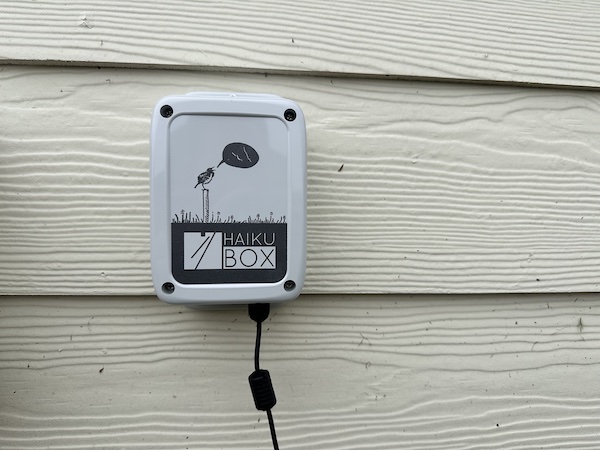
Haikubox is designed to be vertically wall-mounted. It has a hole on the top that you can hang the device on a nail or screw.
BirdWeather PUC

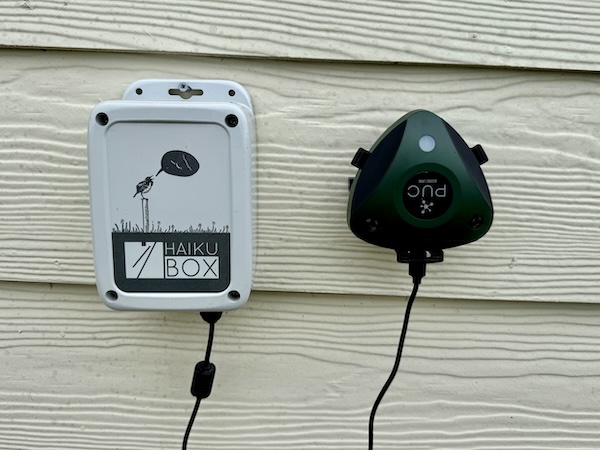
BirdWeather’s PUC is a portable device that’s great as a hiking companion or drop-off nature recorder. If you wish to use it in a stationary location, the included clip is tripod-mountable. This clip also secures into the separate BirdWeather Backpack.
Power options
BirdNET-Pi
BirdNET-Pi requires a 5V/2A power supply, which can be plugged into a standard electrical outlet. I struggled to find an appropriate power supply that would fit into the weatherproof enclosure. My station ran “underpowered” with a power supply that barely fit into the enclosure, but it seemed to perform fine. I picked up a right-angle adapter in order to get the correct power.
Haikubox
Haikubox requires a 120V DC power supply which is included. It also includes an 11′ power cord and must be plugged into a waterproof GFCI outlet. I really appreciate the compact plug choice of the Haikubox because I was worried it wouldn’t fit alongside the BirdNET-Pi station that’s already plugged in.
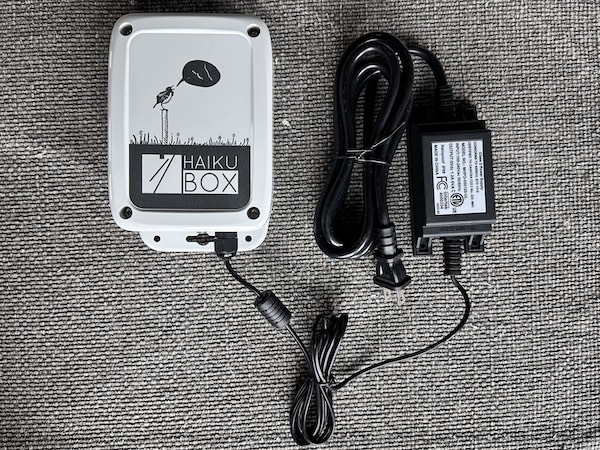
BirdWeather PUC
Birdweather’s PUC requires three AA batteries and has a battery life of 48hr with lithium and 26 with alkaline.
Detection totals and accuracy thresholds
BirdNET-Pi
BirdNET-Pi’s detections depend on the confidence threshold in the settings and the type of microphone setup being used. The current model (3K) can ID over 3,000 bird species. I’ve traditionally run my station at 50% confidence and usually get around 2,000 detections per day in good weather. I feed birds in my backyard to attract them.
Haikubox
Haikubox has fixed confidence levels that classify a recording as low (>20%), medium (40% ≤ 90%), and high (<90%). The developers confirm this was chosen arbitrarily.
BirdWeather PUC
BirdWeather has customizable confidence and probability thresholds. This can be fine tuned to your preference.
Comparing detections greater than 20%
My BirdNET-Pi station confidence level is set at 50%. For the purpose of this comparison, I’m changing it temporarily to 20% to match the Haikubox. Let’s see how many detections each station captures from a one-day window.
| Detections > 20% | |
|---|---|
| BirdNET-Pi | 6142 |
| Haikubox | 4980 |
| PUC | TBD |
The BirdNET-Pi station reported a much greater number of false positives during the day of testing. Many birds that were definitely not in my yard were reported. This is why I keep its confidence level higher at 50%.
Target audience
BirdNET-Pi
The BirdNET-Pi is a fun and sometimes challenging option for those who are technically savvy. It requires imaging an SD card, SSHing into the Pi to install the software via the command line, and ongoing maintenance and updates. I’ll be honest, sometimes the software gets behind in detections or stops detecting completely and some troubleshooting or a reboot may be required. But over the past few months, this hasn’t been an issue.
Haikubox
The Haikubox is a great option for the casual enjoyer of birds. It’s a set-it-and-forget-it device. The work that has gone into this product is evident, it’s stable and reliable and just works.
PUC
The PUC is ideal for birders who want to add another dimension to their birding trips. Strapped to a bag, it is a companion while you are birding. Simply bring it while you bird, then sync and analyze the recorded audio at home. Similar to the Haikubox, the PUC from BirdWeather doesn’t require any ongoing maintenance or troubleshooting. It’s power-efficient with AA batteries that can be quickly swapped out.
Use cases
The technically-savvy 👨🏼💻
BirdNET-Pi is suitable for the tinkerer who wants to build something fun with a Raspberry Pi. It has a high barrier to entry for the average person. It’s great for monitoring which birds visit your backyard.
The casual enthusiast 🔎
Haikubox is suitable for bird enthusiasts and researchers who want to monitor avian populations in local areas with a reliable internet connection and power. It’s easy to set up and user-friendly.
The birder on the go ⛰️
Birdweather’s PUC is suitable for birdwatchers and hikers who want to identify bird sounds while on the go.
User interface
BirdNET-Pi
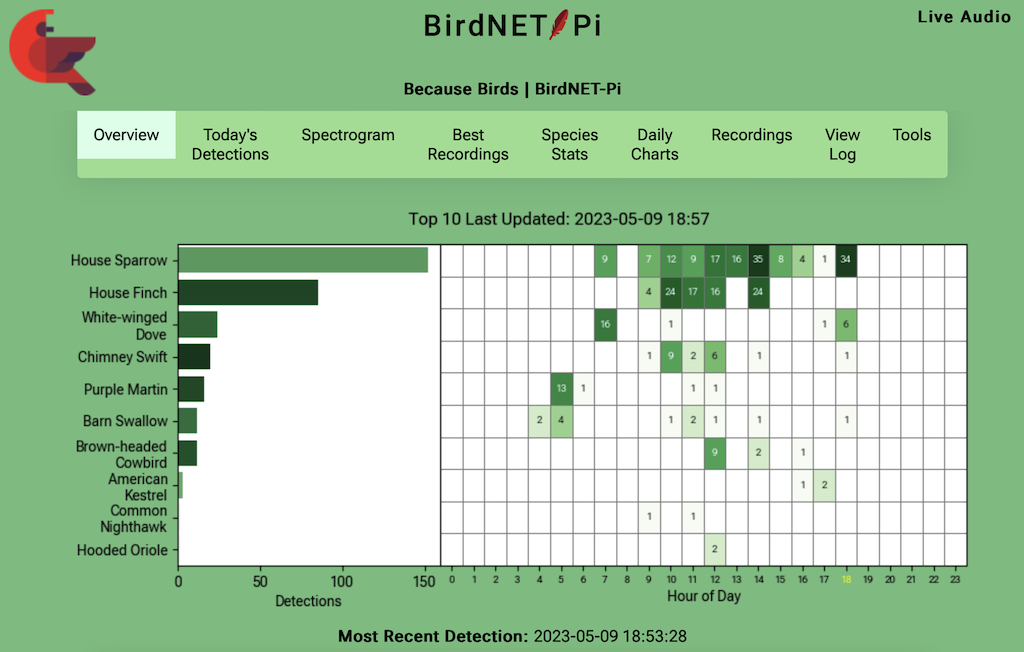
BirdNET-Pi is accessed via a web interface on your local home network (you can also make it publicly accessible via the web) and it displays real-time spectrograms and bird identification results. The interface is simple and displays the daily top 10 species along with a heatmap of detections per hour. There are tabs for daily detections, spectrograms, best recordings, and several tabs for stats.
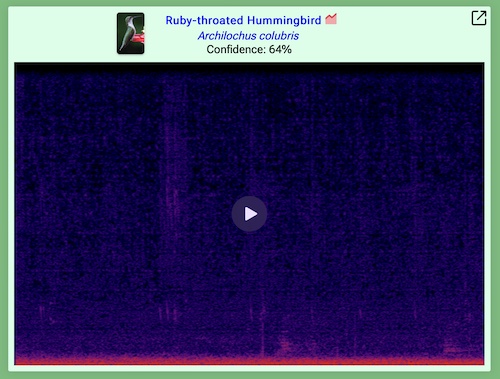
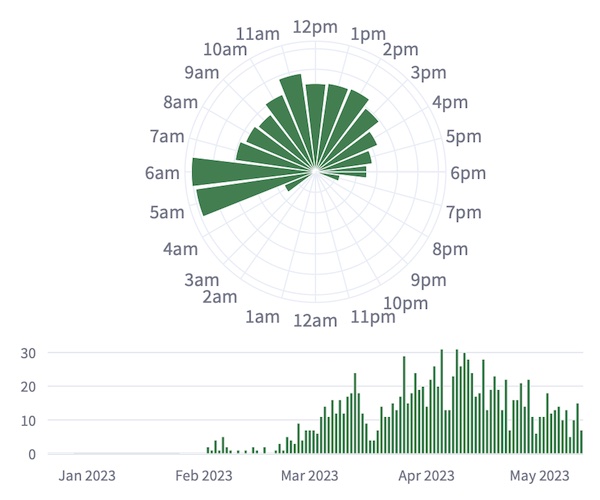
Haikubox
Haikubox is accessed via an app or web interface that displays real-time spectrograms and bird identification results. The interface lets you bookmark your favorite stations for easy access. Once you’ve set up your station it defaults to showing yours. It’s quick and responsive and provides many resources to learn, such as Birdcast for migration info, eBird links, and historical detection data. Star your favorite recordings to keep them indefinitely, otherwise, detection audio older than 30 days is purged.

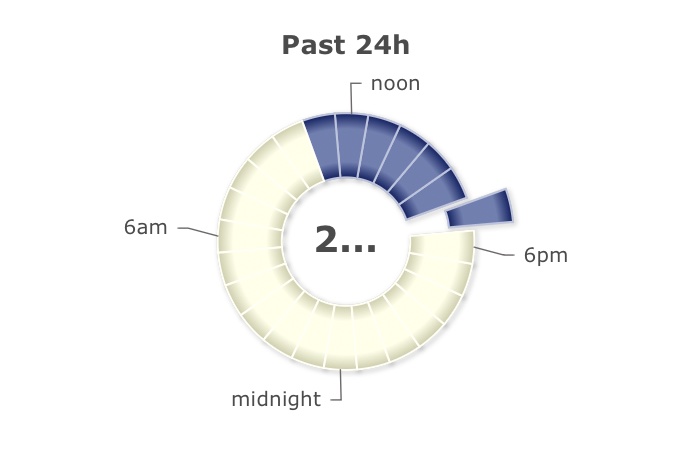

PUC
Birdweather’s PUC optionally pairs with your phone while in the field to analyze detections in real time. Optionally, you may record offline and import the audio to analyze after your trip. Your uploads will sync to BirdWeather for historical purposes.

Recorded audio samples
The following two audio clips are of the same Great-tailed Grackle, each recorded on their respective station.
Haikubox
Haikubox has a built-in microphone. It’s covered in a screen and can hear all kinds of birds.

BirdNET-Pi
Recordings from a BirdNET-Pi station will depend on the specific microphone you’re using. I’m using a cheap USB lav mic.

BirdWeather PUC
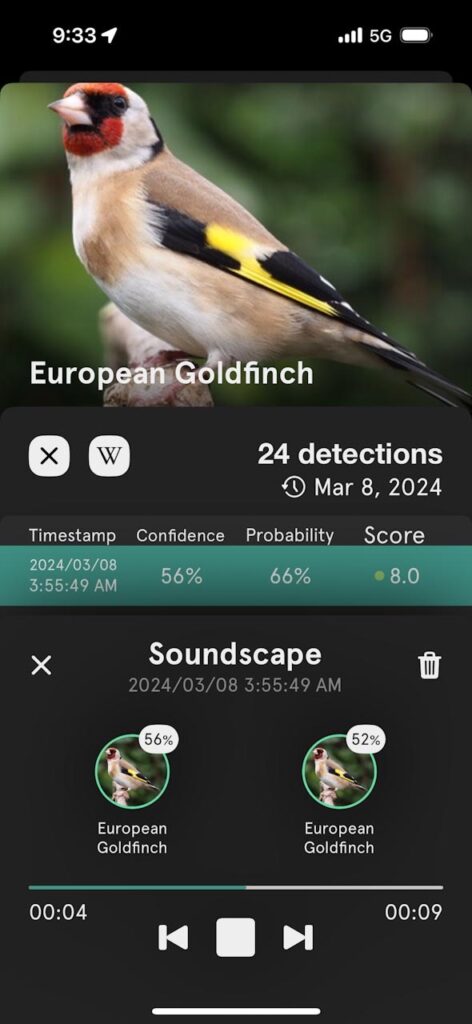


Complexity of setup
BirdNET-Pi
BirdNET-Pi requires some technical expertise to set up. Users need to have a basic understanding of Raspberry Pi and Linux to install and configure it. A few months ago my station stopped processing new audio and it required tinkering by removing the files it was hung on and a quick reboot.
Haikubox
Haikubox is meant to be friendly and accessible as possible. The Haikubox connect app is required for initial setup and can then be deleted. It was set up, connected to my wifi, and ready for detections quickly.
PUC
PUC is paired with your BirdWeather app for real-time analysis or records passively for analysis in post.
Summary
Before you choose a bird identification station, consider your technical skills and general use case.
BirdNET-Pi
Price estimate: $100 – $200+ dollars depending on hardware and setup.
If you want a technical challenge and flexibility go with BirdNET-Pi. It offers more customization options and your choice of notification method. I use Discord for this.
Pros: Flexible configuration options. It can be used with a variety of microphones.
Cons: Can be challenging to set up. Raspberry Pi is extremely expensive currently but you may use a Le Potato computer. You’ll need to figure out a way to get a microphone outside or build a weather-proof enclosure.
Haikubox
Price: $199-399.
If you want a frictionless device that is quickly ready to go, the Haikubox is a great choice.
Pros: Easy to set up. Flexible notification settings to only be alerted when uncommon or favorite species are detected.
Cons: Limited customization options (this may be a plus for some). I felt the user interface for the app could be simplified slightly, but currently the app appears to be a web wrapper showing a mobile version of the website. Improvements are coming and the developers welcome feedback from users
BirdWeather PUC
Price: $249
If you need a device that can be left somewhere for a few days or tag along on your birding adventures, the BirdWeather PUC is a great choice. However, it requires a bit of legwork once you return from birding.
Pros: Small and portable. It’s easy to take into the field while birding. Syncs to BirdWeather. Low power consumption results in a long battery life.
Cons: Requires AA batteries for operation, but this allows for a quick swap to maintain power, so the con is debatable.
Links to learn more
- BirdNET-Pi (also see BirdNET Go)
- Haikubox
- BirdWeather PUC
